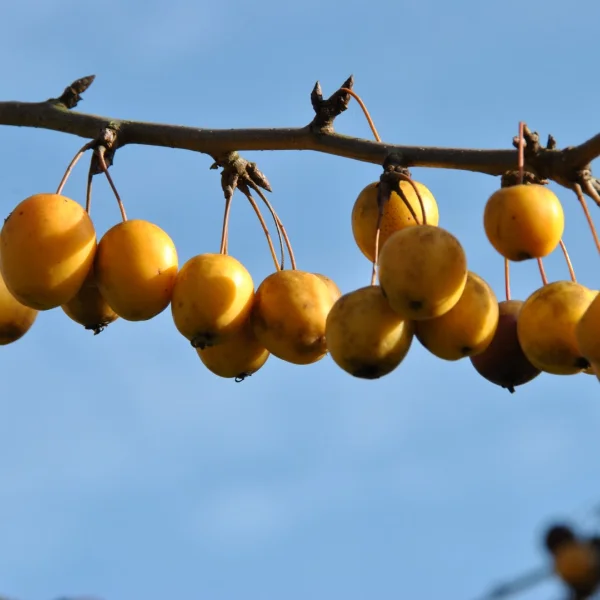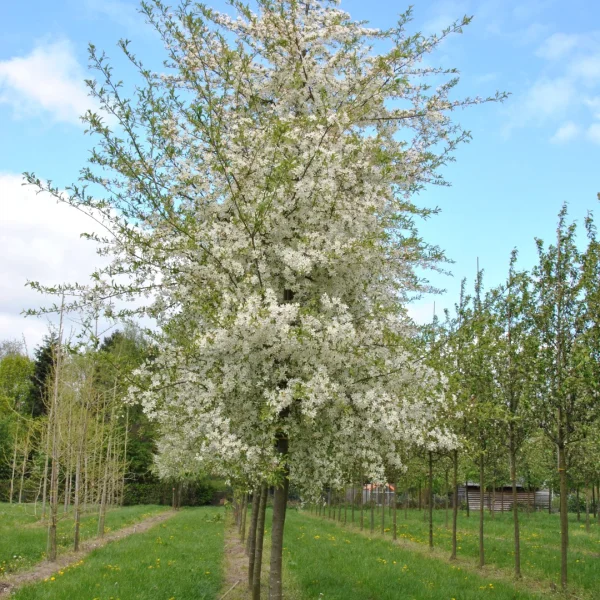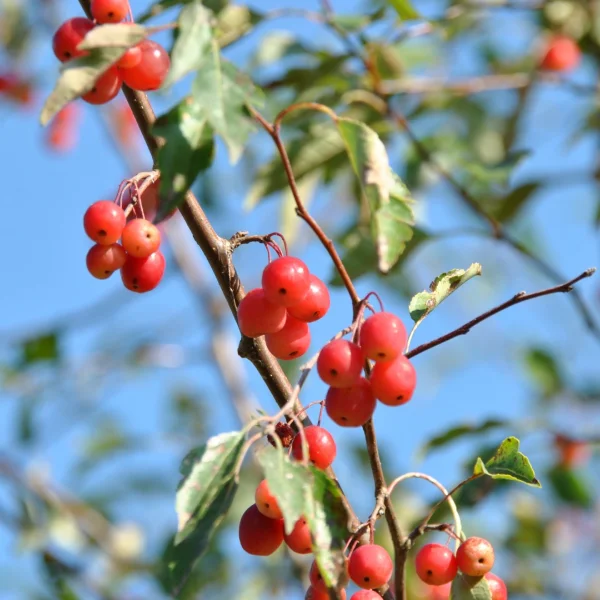Malus trilobata – Malus trilobata
Rosaceae
Malus trilobata – Malus trilobata
Arbust mare cu creștere lentă, care se transformă într-un copac mic, uneori de dimensiuni medii. Înălțimea finală este de aproximativ 6 m. Coroana dens ramificată este piramidală până la larg piramidală. Ramurile și scoarța sunt de culoare gri-maronie. Frunzele sunt trilobate, iar lobii sunt, de asemenea, lobați și dințoși, uneori apărând cu cinci lobi. Frunzele sunt de culoare verde închis vara și devin galbene până la roșu intens toamna. În iunie, florile albe se deschid din muguri albi. Florile au o dimensiune de 2,5 până la 3,5 cm. Ele sunt urmate de fructe destul de mici, rotunde sau ușor ovale. Fructele sunt roșii și rămân pe copac până la începutul iernii.
Availability
Specifications
Download PDF
Height
6 (8) m
Width
3-4m
Crown
pyramidal tot broad pyramidal, dark, dense crown
Bark and branches
twigs and bark grey-brown
Leaf
3-lobed, 5 - 8 cm, dark green
Autumn colour
yellow, red
Flowers
white, flower buds white 2.5 - 3.5 cm early-mid-June
Fruits
yellow and red, 1.2 cm - 1.6 cm
Spines/thorns
None
Toxicity
usually not toxic to people, (large) pets and livestock
Soil type
nutrient-rich, well-drained soil
Paving
tolerates paving
Winter hardiness zone
6 (-23,3 to -17,8 °C)
Wind resistance
good, susceptible to sea wind
Other resistances
resistant to frost (WH 1 - 6), can withstand wind
Fauna tree
aluable for bees (honey plant), provides food for birds
Application
industrial areas
Shape
clearstem tree, multi-stem treem
Origin
south East Europe, West Turkey
Synonyms
Eriolobus trilobatus
Possibly of interest
Frequently asked questions
Malus trilobata
Malus trilobata can eventually reach a height of 6 (8) m, depending on the site and climate conditions.
Malus trilobata has a average growing and can eventually reach a height of 6 (8) m, depending on the site and climate conditions.
The leaves of Malus trilobata turn yellow, red in autumn.
The right time to plant Malus trilobata is during the dormancy period. In Western Europe, Malus trilobata with root balls can generally be planted from mid-November to late April, although this depends strongly on the climatic conditions and the species of tree.
june.
General
 English
English
 English (United Kingdom)
English (United Kingdom)
 Nederlands
Nederlands
 Nederlands (België)
Nederlands (België)
 Deutsch
Deutsch
 français
français
 čeština
čeština
 polski
polski
 español
español
 română
română
 dansk
dansk
 svenska
svenska
 magyar
magyar
 Türkçe
Türkçe
 slovenčina
slovenčina
 русский
русский
 norsk
norsk




